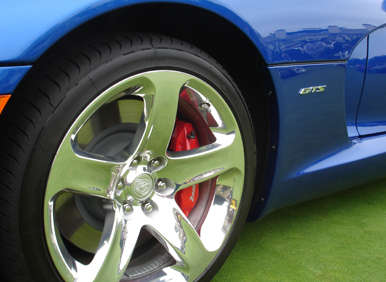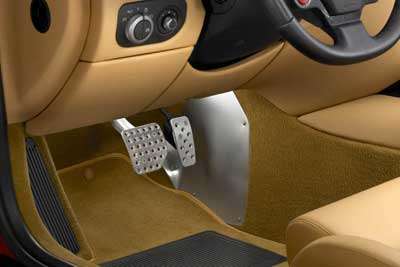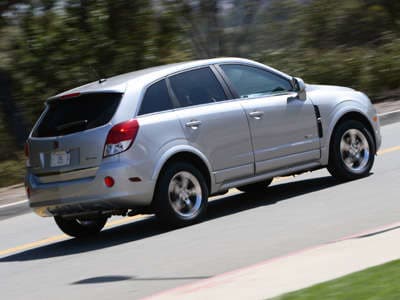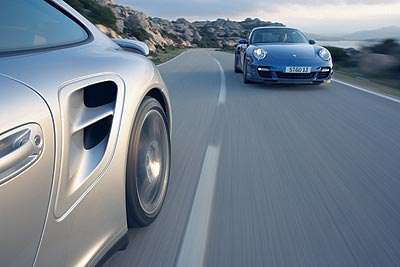Recent Articles
Popular Makes
Body Types
What Are ABS Brakes?

An anti-lock braking system (ABS), as its name implies, prevents the wheels of a vehicle from locking under braking in order to assist a driver to maintain steering control of a vehicle in emergency braking situations. In addition to providing an additional layer of control, ABS can shorten braking distances on both dry and slippery surfaces by eliminating the skidding heavy braking can instigate.
Recent developments in electronics technology have enabled the anti-lock brake system to also vary brake force from front to rear, as well as between individual wheels. These improvements have allowed the ABS system in today’s cars to interact with traction control and stability control systems as well.
Prior to the advent of anti-lock brakes, drivers were advised to pay careful attention to the feel of the car under braking and to “pump the brakes” if they felt the wheels locking while the car was still in motion. This technique is called “threshold braking” as the driver was attempting to anticipate the threshold of the imminent lock up and prevent it by releasing the brake pedal at just the right moment. It sounds complicated, but experienced drivers could usually master the technique.
The National Highway Traffic Safety Administration describes the functioning of ABS as follows: "ABS works with your regular braking system by automatically pumping the brakes. In vehicles not equipped with ABS, the driver has to manually pump the brakes to prevent wheel lockup. In vehicles equipped with ABS, your foot (can) remain firmly planted on the brake pedal, while ABS pumps the brakes for you while you concentrate on steering to safety."
ABS was actually developed in 1929 for use in aircraft. With the speeds pilots were trying to arrest during the landing of an airplane, threshold braking was just too difficult to pull off consistently. A number of mechanical iterations of ABS were tried in the ensuing years, but most proved too expensive or too unreliable. The first known application of a computerized system to an automobile was for the 1971 Chrysler Imperial. Chrysler called it “Sure Brake”.
Anti-lock Brake System: How It Works
Four wheel-speed sensors, a pump, hydraulic valves, and a central electronic control unit comprise the anti-lock brake system. If, under braking, the wheels speed sensors detect one or more of the wheels slowing faster than the others, a signal is sent to the electronic control unit with actuates the appropriate hydraulic valve to release some of the braking force applied to the wheel in question. When all of the wheels are synchronized again, the pump sends braking pressure back to the affected wheel to enable the car to continue to stop. The driver is made aware of all of this by a pulsation of the brake pedal.
This is why in modern defensive driving situations, drivers are advised to apply brake pressure and maintain it, trusting the ABS system to apportion the proper amount of brake force to bring the car to a stop.
The system can also do the opposite, if it detects one wheel rotating faster than the other three it can apply more brake force to that wheel to keep it in synchronization with the others. This is usually affected in traction control and anti skid situations.

Anti-lock Brake System: Types
The number of wheel speed sensors they use and the number of control valves involved generally classifies ABS systems.
A four-channel four-sensor system mounts a speed sensor and a control valve at each individual wheel. This setup offers the most flexibility and is the most desired arrangement. This configuration permits the monitoring and control of each wheel on an individual basis.
A three-channel four-sensor system apportions a sensor to each wheel, but the rear wheels share a control valve.
Three-channel, three-sensor systems, give a sensor and a valve to each of the front wheels, while the rear wheels share a single sensor and a single valve. This system is most often employed on light duty pickup trucks. The sensor is mounted in the rear axle.
One-channel, one-sensor systems leave the control of the front wheels to the driver’s threshold braking ability, but apply anti-lock action to the rear wheels. The wheel speed sensor is mounted in the rear axle.

Anti-lock Brake System: Special Considerations
While ABS has been proven to shorten stopping distances on smooth pavement — as well as on wet and icy roads — there are some situations in which ABS actually lengthens stopping distances. If the vehicle is braking hard on an extremely rough or corrugated surface, some ABS systems can fooled into thinking the unevenness of the road surface is causing the wheels to lock prematurely. This will cause the system to pulse the brakes, potentially extending the stopping distance.
In gravel, sand, deep snow, or other situations where accumulations of debris ahead of the wheels could serve to help slow the vehicle, ABS will minimize the effectiveness of the circumstance. While locked wheels would dig in and stop the car in this instance, ABS-serviced wheels would continue to turn; potentially rolling over the accumulation of the debris that could be used to help stop the car.
Still, there is no arguing the fact cars are safer with ABS than without it. In addition to helping the driver stop the car without skidding out of control, ABS also enables a driver to continue to steer the car while applying full braking pressure. On non-ABS equipped cars applying full braking pressure would lock the front wheels and render them unresponsive to steering inputs. The front wheels have to be rotating to make the car change its trajectory (change direction). When the front wheels lock, the automobile continues to slide along its previous trajectory — presumably continuing toward the obstacle the driver was trying to avoid when instituting the braking maneuver in the first place.
